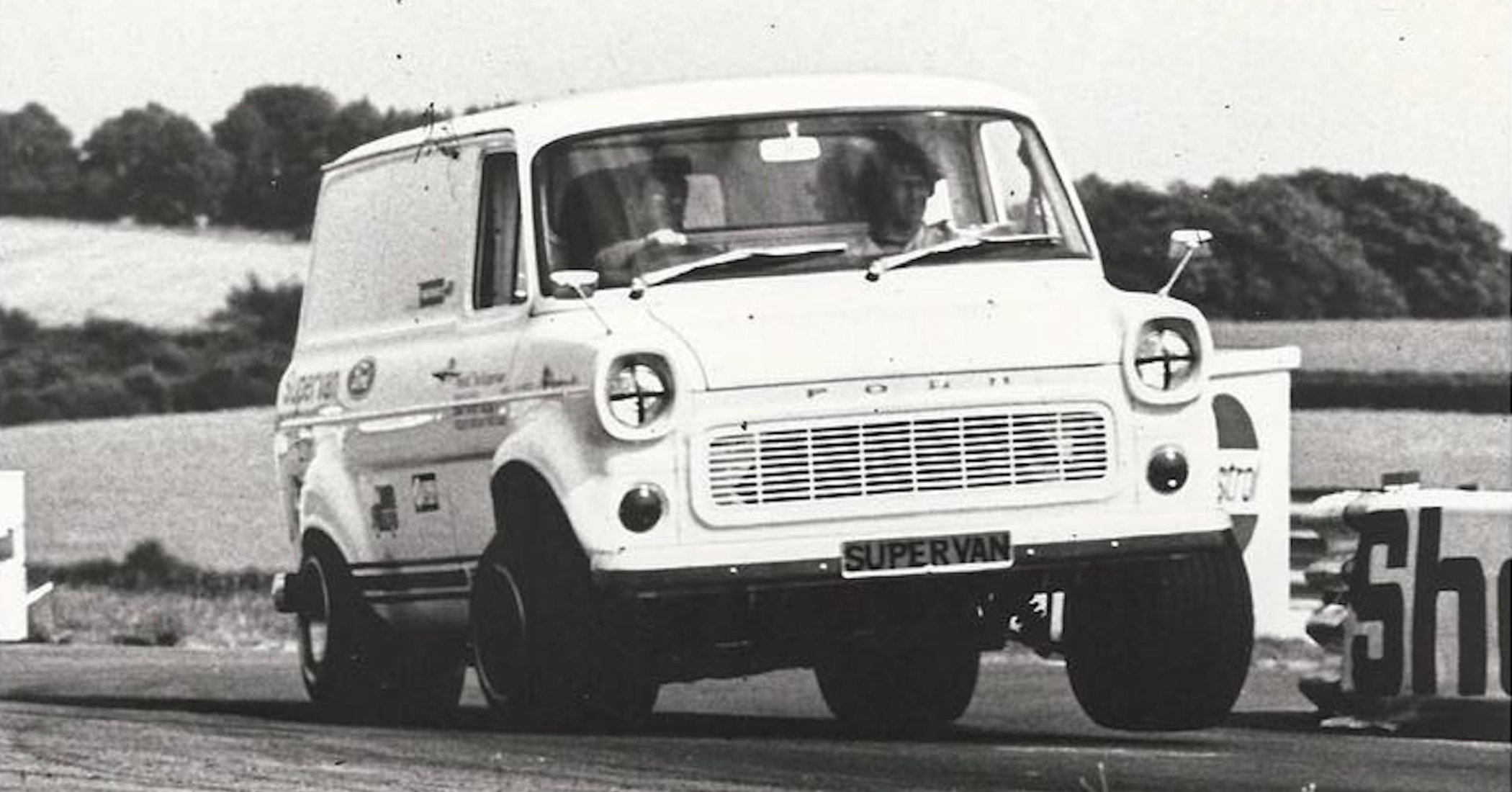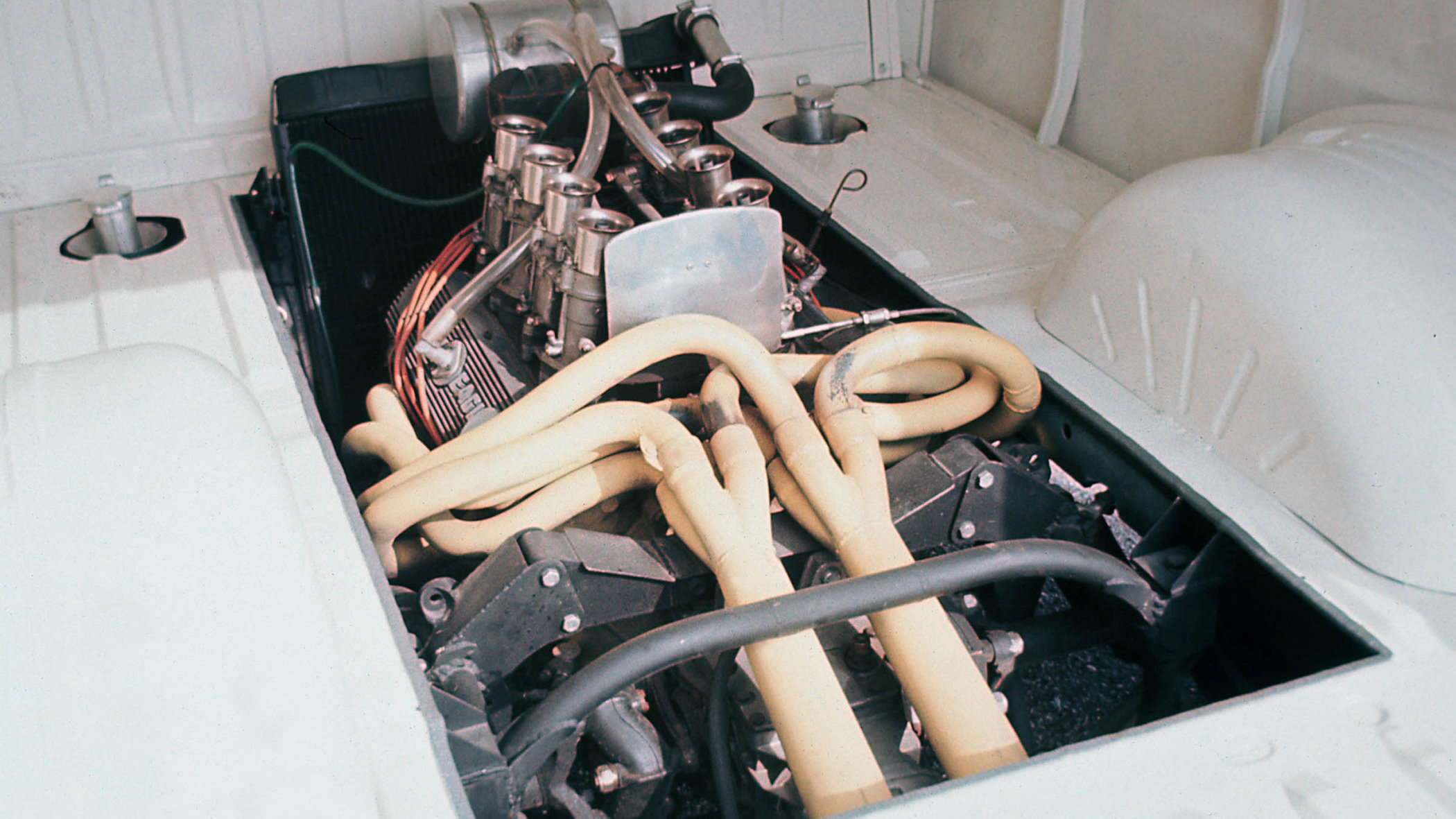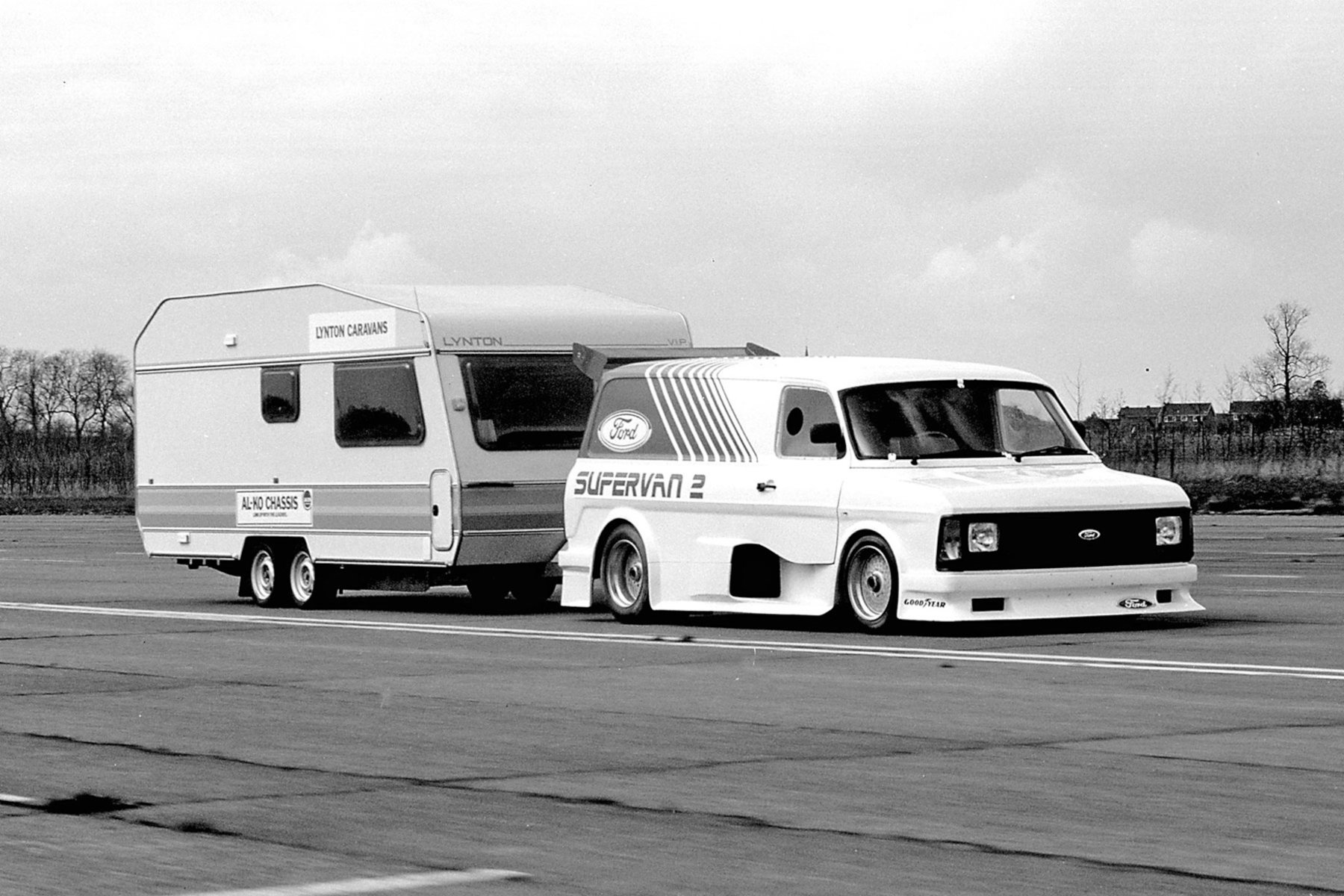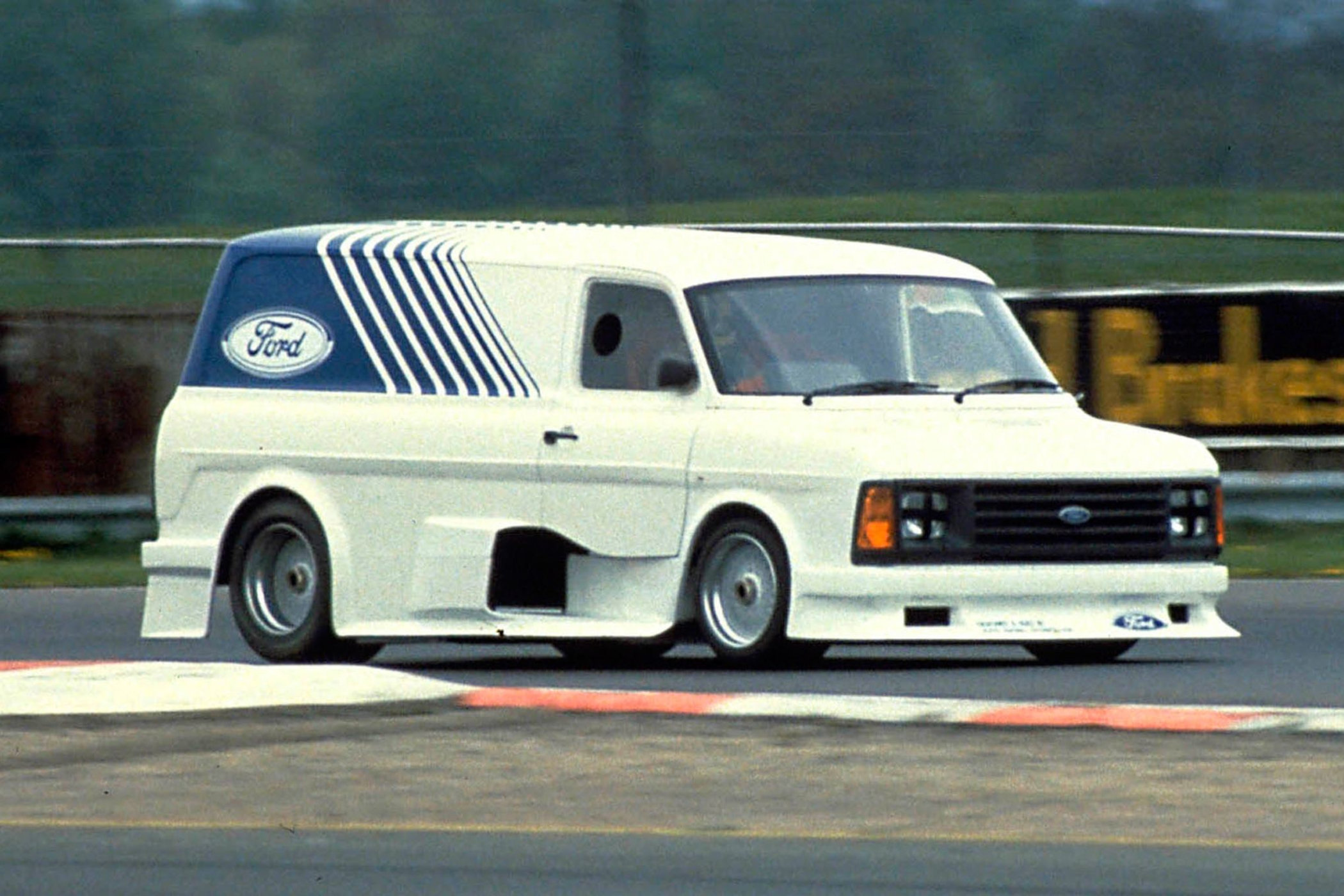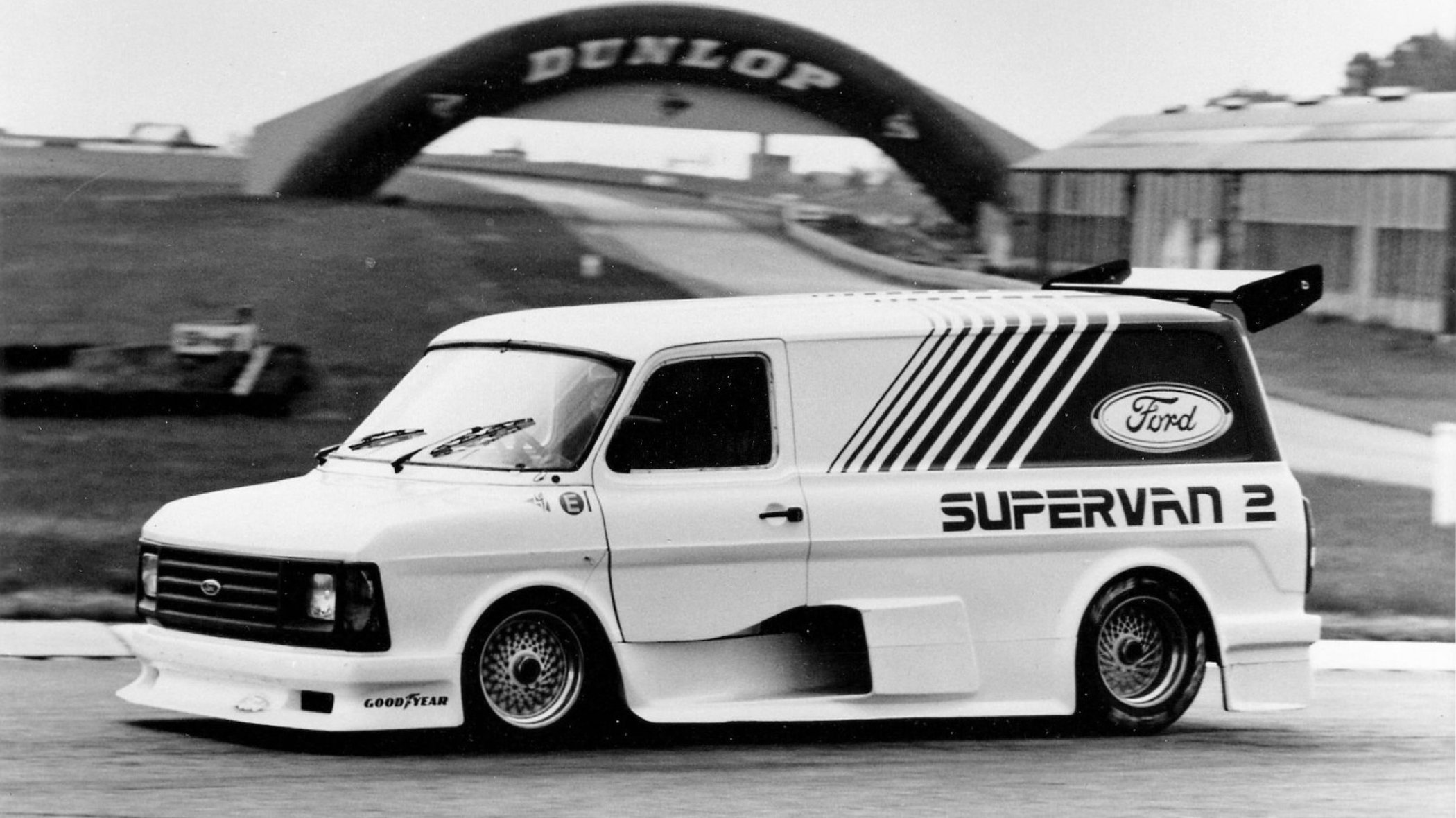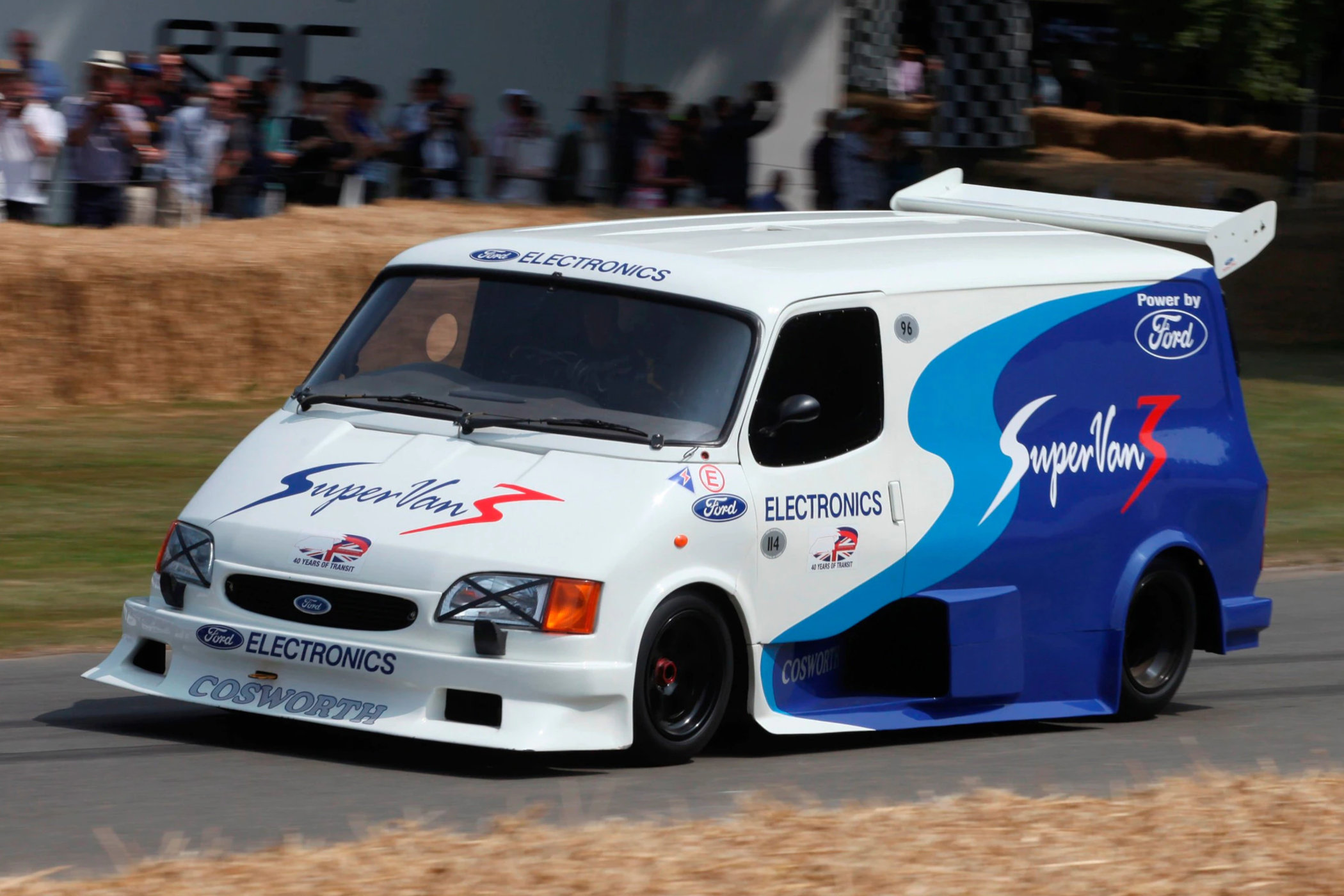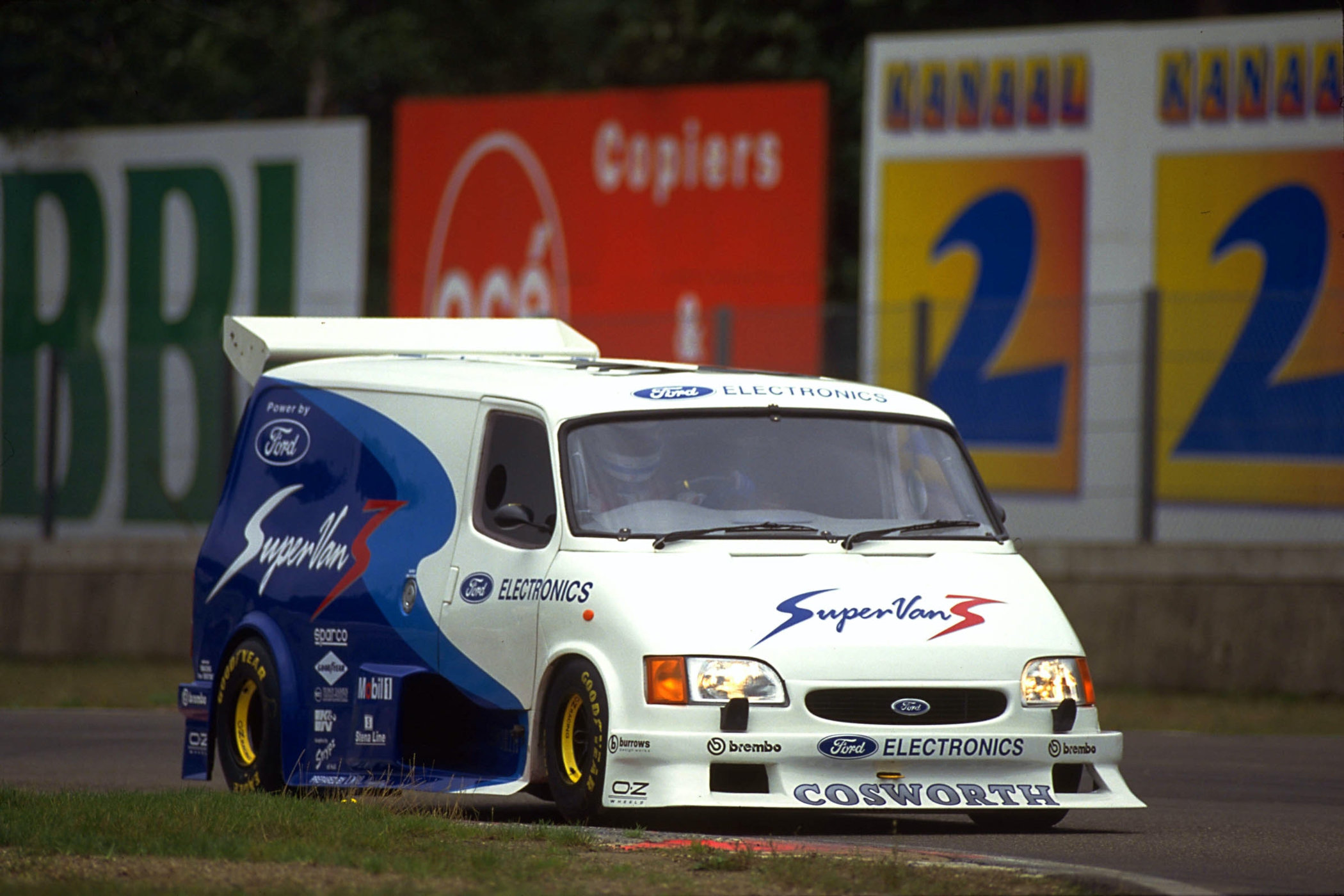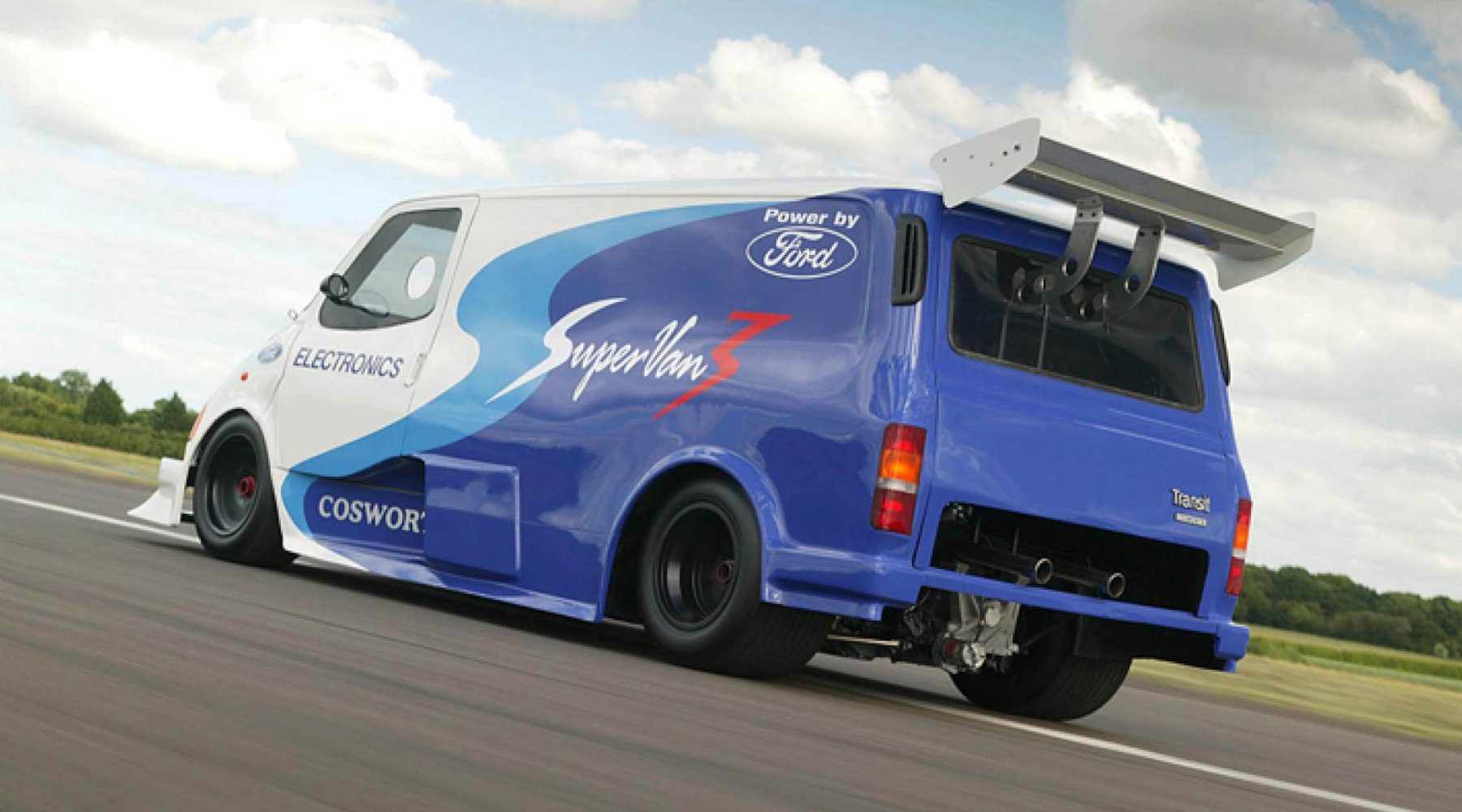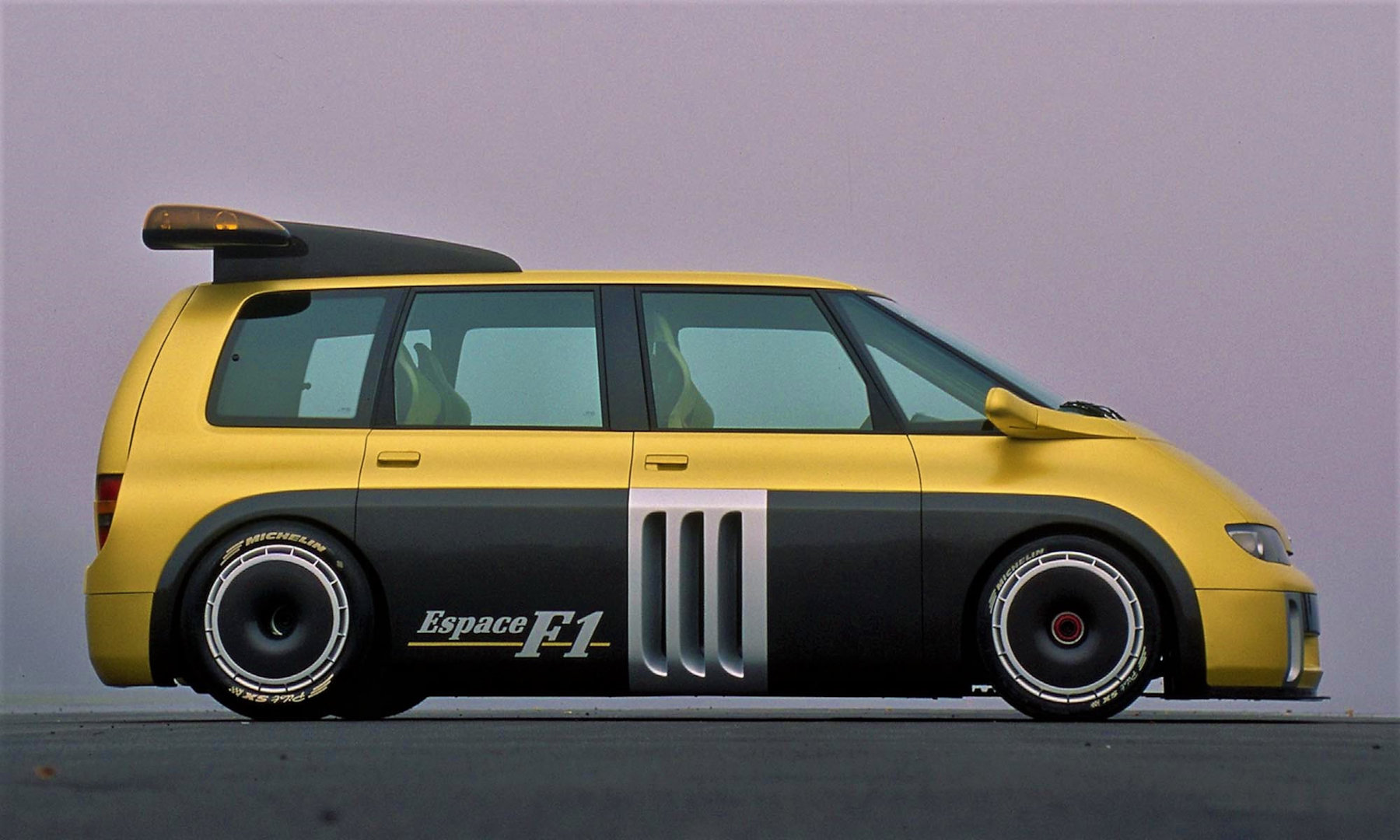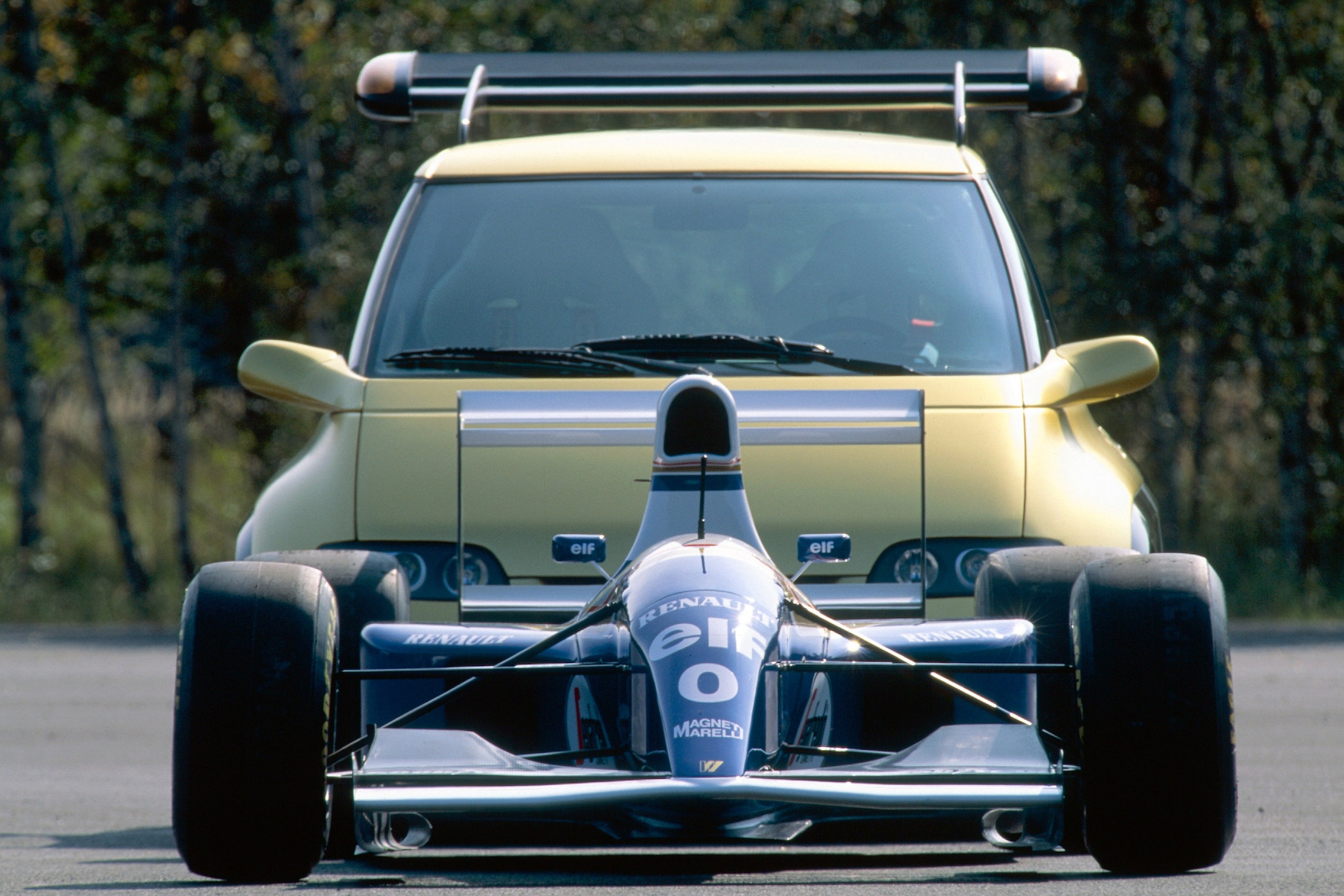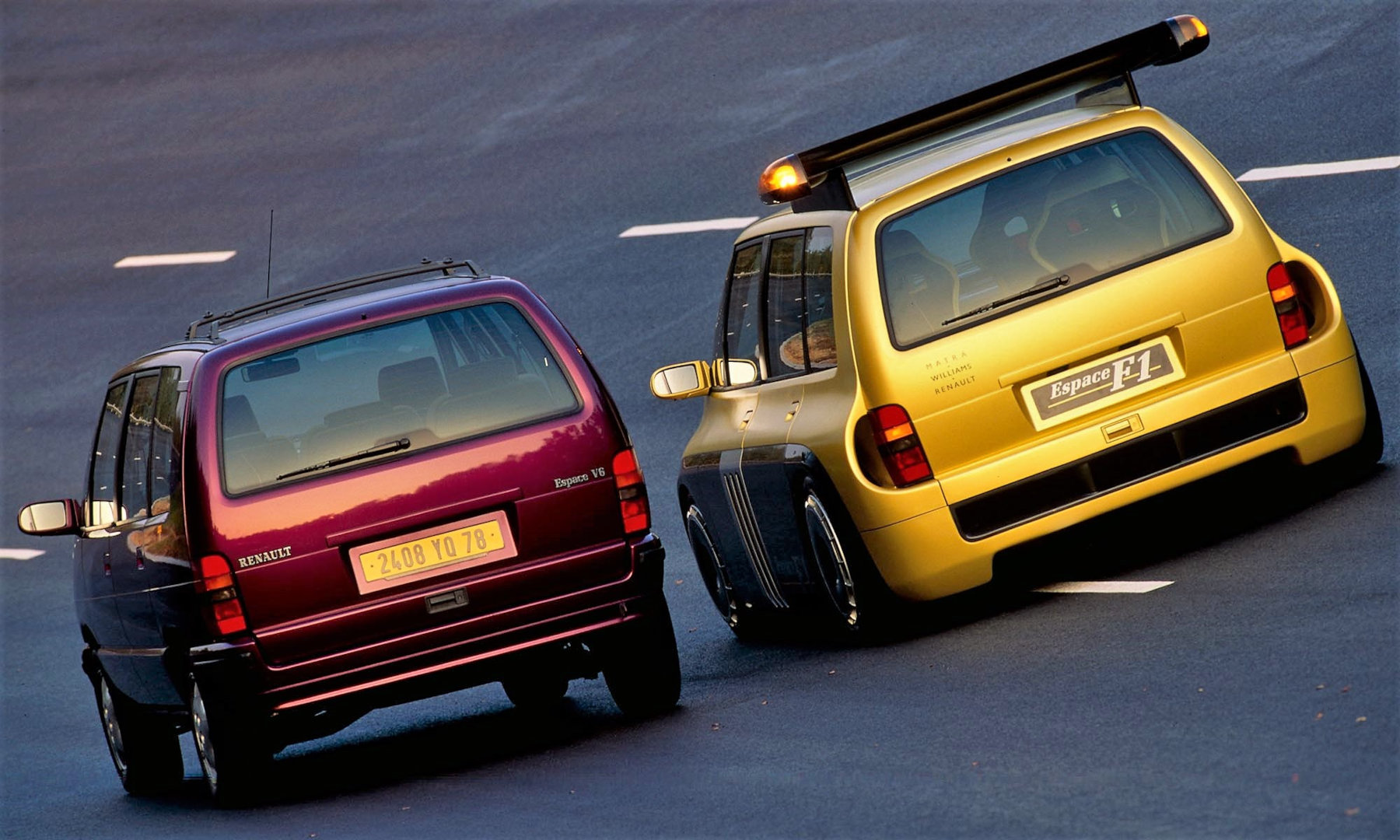The Mad Concept Of The Supervan
Stuff a big engine in a humble van and riot around with it!
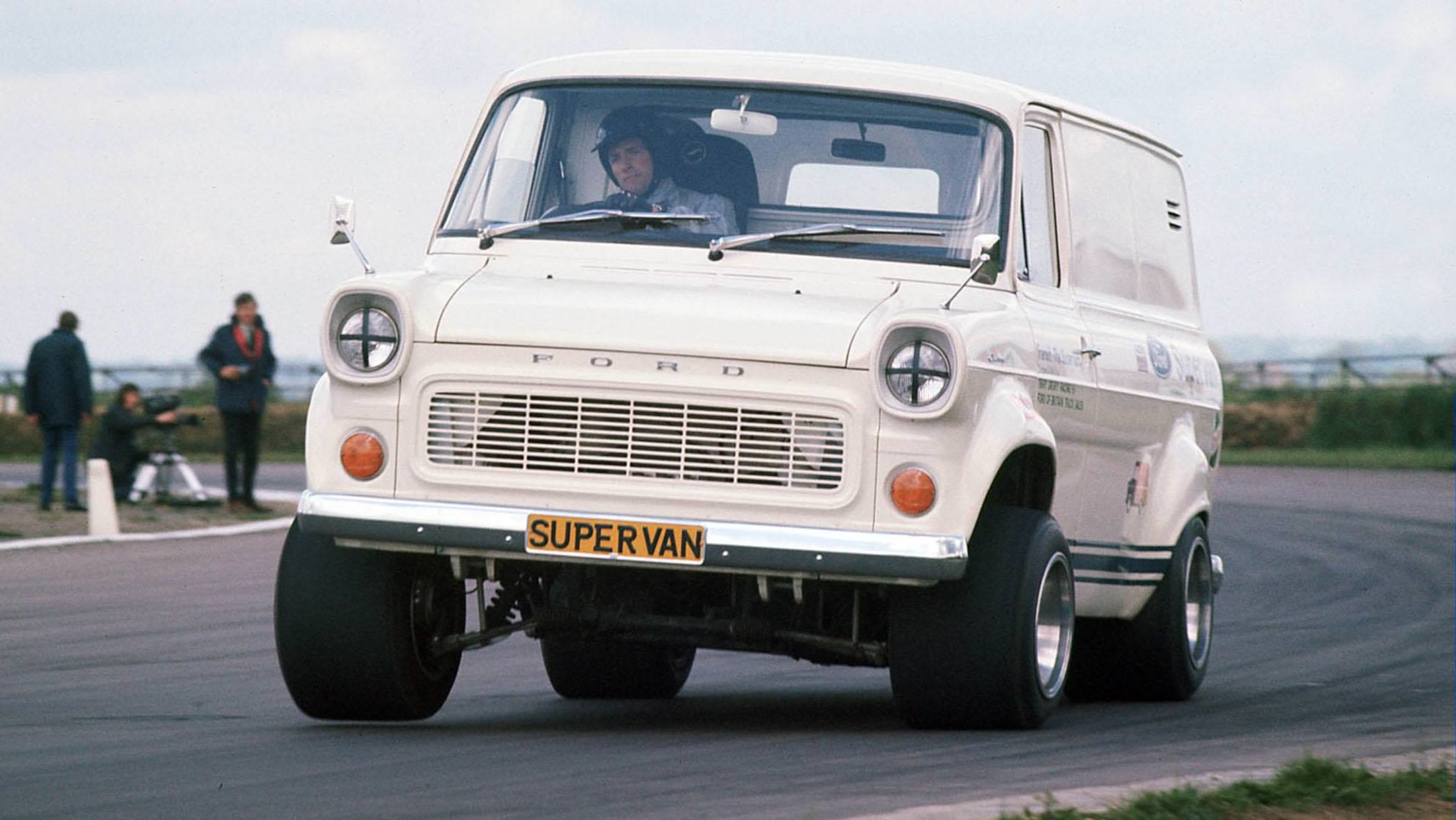
If you’re anything like me, and on the road in a bit of traffic quite regularly, some cars stick out more than others, and not always in a good way. One eyesore we’ve surely all encountered before, and perhaps had the ‘pleasure’ of driving ourselves for whatever reason, is the van. They’re big, loud and often are right on your bumper trying to pass you by almost pushing you out the way. Generally, they’re a pain and a nuisance more often than not. But how can you spruce up a van to become, well…. cool? Simple, add a big engine and make it go fast. Like, REALLY fast!
Basically, everything with the word “Super†in it is instantly better, right? Superman, Superspeed, Supersonic, Supercharger, Supercompressor, Supersonnerie, Supercar and so on. But how about a Supervan? Is calling a simple van a Supervan the way to go to shed the horrid reputations most people associate it with? Well no, it’s not just about naming something “super†it’s more about making it super in the process as well, something Ford and Renault took very much to heart!
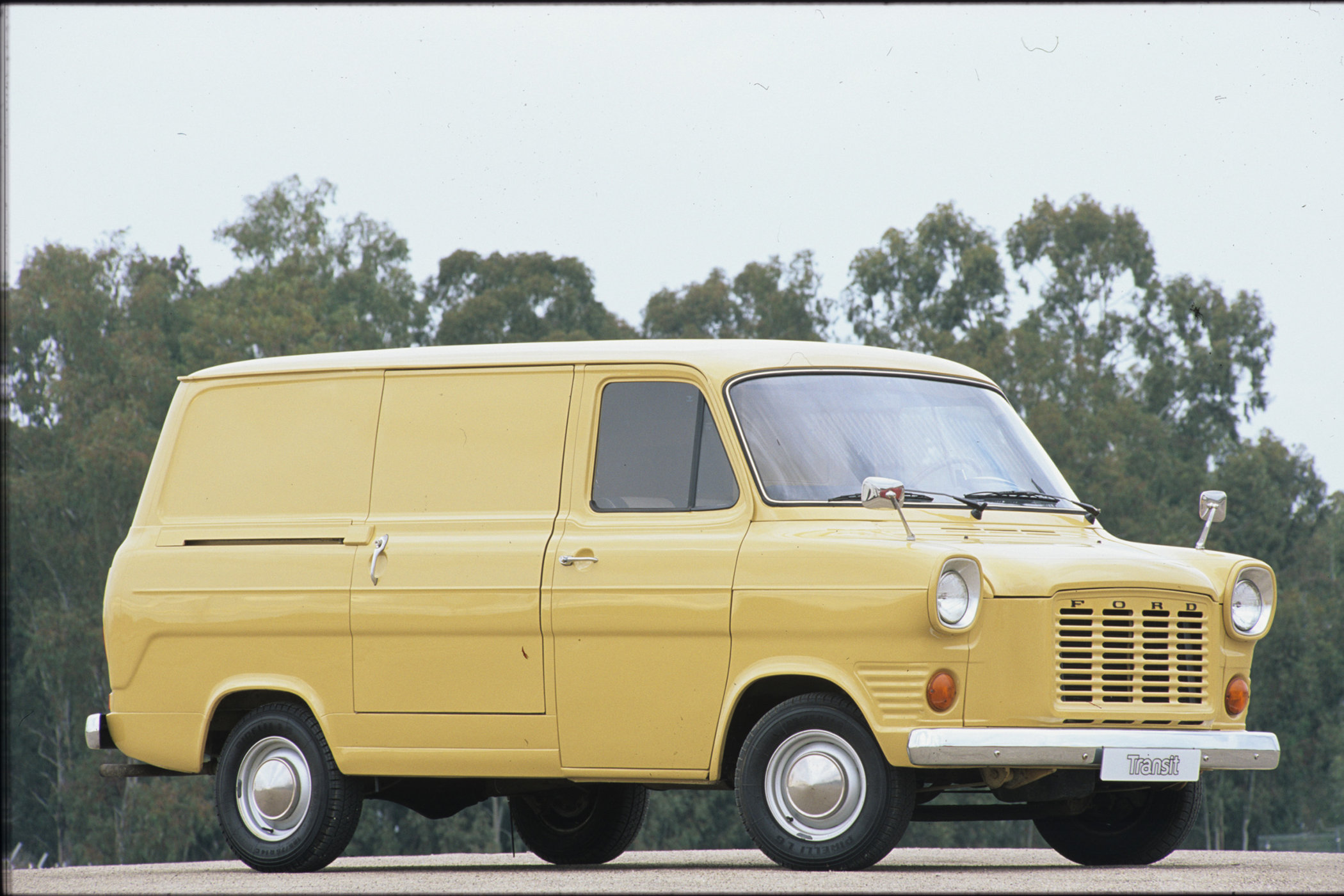
The original Ford Transit was introduced in 1965, following the discontinuation of the Ford Taunus Transit. The Transit remains one of the bestselling commercial vehicles of all time and has been in continuous production ever since. But, as it is a basic van, it’s not all that cool to look at no matter what generation of Transit is before you. It’s designed to haul stuff around from A to B and not to look good doing it. Of course, things have moved on from the original series of Transit vans. But in all fairness, any van out there looks pretty much the same from the bumper/grille backwards.
The Transit actually has an interesting reputation, as at one point it was quite popular with thieves and robbers through the UK as a form of transportation. You could easily conceal a crew, and whatever you stole in the back, away from prying eyes and make your getaway. The UK’s Metropolitan Police allegedly reported that in 1972, almost 95% of the bank robberies were done using a Ford Transit. Not the best reputation you can have, but luckily there’s an upside to the Transit’s history too.
Ford Transit Supervan (1971)
The concept of the Supervan isn’t all that complicated. From the outside, we have a standard looking Ford Transit van, but underneath that exterior shell, it’s a whole different world. The idea started with the 1971 Ford Transit Supervan, built as a promotional vehicle by Ford in the UK. It featured a white bodyshell of a long-wheelbase Ford Transit draped over a Ford GT40 chassis and engine. This meant the Ford Transit Supervan had about 435 horsepower, about 4 to 5 times the power of a standard one!
The result is quite hilarious, and probably a bit scary to drive as well. The widened wheel arches and big tires sticking out from underneath it are pretty much the only giveaways about this car’s underpinnings. Until it is fired up, that is. The unmistakable V8 rumble shows the Supervan’s intentions. First demonstrated at the UK racing circuit of Thruxton, the car was capable of zero to 100kph in roughly seven seconds and ploughed on to a top speed of about 255kph, only limited by severe body lift at such speeds. The whereabouts of the original Ford Transit Supervan remain unknown, but luckily we have this period video from Ford Heritage to enjoy;
Ford Transit Supervan 2 (1984)
By 1984, Ford thought it was about time to create a second Supervan based on the “Backbone of Britain†Ford Transit and promote it further. The Ford Transit MKII was introduced in 1977 and was once again a sales hit for a light commercial vehicle. By now the car had grown a little and had a redesigned front end that could house bigger engines. And Ford took that quite literally, as the Ford Supervan 2 had the biggest engine ever fitted to a Transit at the time.
A restyled fibreglass body, closely resembling the roadgoing Transit but with all sorts of aerodynamic changes, was draped over a Group C Ford C100 racing chassis and fitted with a 3.9 litre Cosworth DFV V8 engine. This engine produced close to 600 horsepower, a significant increase over the first Supervan. During testing at Silverstone, the Ford Transit Supervan 2 reached a top speed of 174mph or roughly 280kph. An insane speed for any type of van, even if it is a re-bodied Group C race car in drag.
Here’s the car in action at Donington Park in 1986, in quite a rough quality video sadly;
Ford Transit Supervan 3 (1994)
About a year after the Ford Transit Supervan 2 was built, Ford presented the third generation of the Transit van. This means the Supervan 2 was quickly sidelined as a promotional vehicle, and over time rebuilt into the Ford Supervan 3. The third-generation Transit had a completely new shape at the front, ditching the forward-pointing nose of the MKI and MKII. This was also the first time such a promotional vehicle was built in the middle of a generation’s lifespan, instead of towards the end, close to being replaced by a newer model, and effectively rendered useless.
The Ford Transit Supervan 3 was built using the original Supervan 2 chassis but with a new engine. A 7/8th scale fibreglass body hid a 3.5 litre Cosworth HB V8, making between 630 and 700bhp depending on the set-up and tuning of the engine. This engine would power the McLaren MP4/8 car, driven by Ayrton Senna to second place in the 1993 Formula 1 World Championship, coming in second behind fierce rival Alain Prost in the Williams-Renault FW15C (this becomes relevant in a minute).
The top speed of the Ford Transit Supervan 3 was very close to 300kph but later on, the F1-derived V8 was replaced with a more sensible Ford-Cosworth V6 with a measly 260bhp. Still plenty of fun, but nowhere near the level of insanity it originally was. The Ford Transit Supervan 3 was used for quite some time, and appeared at the 2013 Goodwood Festival of Speed;
But there’s more madness; Renault Espace F1 (1995)
I already mentioned there’d be more lunacy, and something regarding Williams-Renault coming up, and this mad Renault Espace F1 is it. The recipe is quite similar to the Ford Supervans but this unique Renault Espace was built to celebrate the success and 10th anniversary of Renault’s people’s van, the Espace. Normally relegated to driving the kids to and from school, or perhaps pack everything up and go on a summer holiday with the family, this Renault Espace F1 is a very different beast.
Where the Ford Supervans would be fitted with V8 engines, this Renault Espace F1 comes with a Renault RS5 V10 engine used in the 1993 Williams-Renault FW15C Formula 1 car. In that very car, the 3.5-litre V10 engine would clinch both the driver’s and constructor’s championship. A heavily modified Espace-shaped carbon-fibre bodyshell would be fitted to a racing chassis with the V10 mounted in the back. Full independent suspension and a massive roof-mounted rear wing would be needed to keep this thing somewhat on the ground.
The interior features four bucket seats, racing harnesses and a steering wheel with push buttons for the F1-derived sequential gearbox. With close to 800 horsepower on tap and a redline of almost 14,000rpm, this monster would do over 300kph when seating four. Here’s actual footage of the car screaming along during testing, at the hands of Alain Prost;
And even more Supervan-like madness
Of course, such vehicles lose the practicality they were once designed for. The Transit lost its loading capacity due to the rear-mounted engines, and the Espace no longer had three rows of seats for the same reason. Nevertheless, as an engineering exercise, and for the sheer amount of fun, these cars are truly awesome! There’s something fascinating as seeing something once designed for hauling stuff around every single day, scream by at 14,000rpm and close to 300kph like there’s no tomorrow.
But the story doesn’t end there. If you check out the listed YouTube clips in any of the videos featured above, you’ll notice there’s far more hooliganism when it comes to van conversions. How about a Ford Transit with the engine from a Jaguar XJ220, once used by Top Gear? Or how about a vintage Volkswagen Bus with a twin-turbo Porsche 993 engine humiliating people at a track day? Once you start digging, you quickly tumble down the YouTube rabbit hole!


